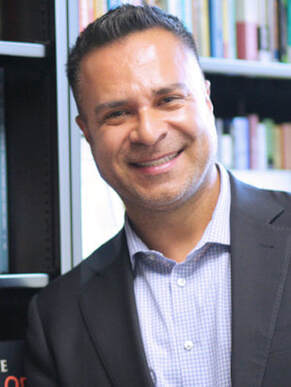In his research, Conchas does not ignore the significant barriers that students face, including limited information, preparation, and advisement that contribute to low four-year college-completion rates. Instead, he places his discussion of systemic barriers within a context of “college-age men and women evincing hope, resistance, and empowerment in the face of marginalization, anti-immigration sentiment, poverty, and an education system that too often reinforces deficit-minded stereotypes.”
“I think it is these most painful experiences that can empower communities to maintain hope, resist inequality and access resources to succeed academically,” said Conchas. For The Chicana/o/x Dream, Conchas and Acevado collected interview data and life testimonios to explore the policies and practices that have inhibited or supported Chicana/o/x success. By identifying community cultural wealth that supports both U.S.-born and U.S. immigrant students of Mexican descent, Conchas calls for better supports to foster the success of Mexican-descent students. Conchas offers key recommendations for higher education administrators to tackle inequality head-on. It is simply not enough to enroll students in higher education, he explains. Instead, they must foster a sense of belonging among Mexican American students, recognizing that “these populations are not monolithic” and honoring the “lived experiences from which these young adults come.” “While diversity and inclusion efforts are common goals in higher education, structures need to be in place that enable students from diverse ethnorace backgrounds to persist and graduate,” Conchas said. “There are a variety of mechanisms that have direct implications for higher education administrators to develop a critical consciousness that dismantles inequality, avoids replicating marginalizing structures, and (re)envisions a socially just reality.” Conchas’s research foci include urban education, sociology of education, and comparative race and ethnicity. He has authored/co-authored nine books addressing the needs and achievements of marginalized youth - The Color of Success: Race and High- Achieving Urban Youth (Teachers College Press): Small Schools and Urban Youth: Using the Power of Culture to Engage Students (Corwin Press), Streetsmart Schoolsmart: Urban Poverty and the Education of Adolescent Boys (Teachers College Press); Cracks in the Schoolyard: Confronting Latino Educational Inequality (Teachers College Press); When School Policies Backfire: How Well-Intended Measures Can Harm Our Most Vulnerable Students (Harvard Education Press); and Inequality, Power, and School Success: Case Studies on Racial Disparity and Opportunity in Education (Routledge). Comments are closed.
|
Resources for:
|
|


